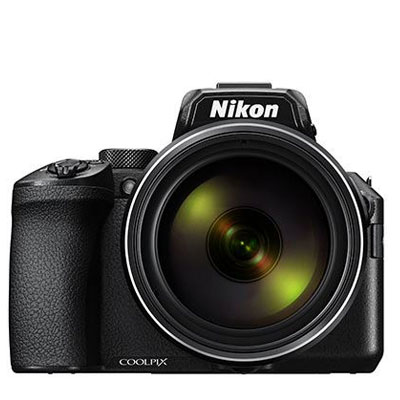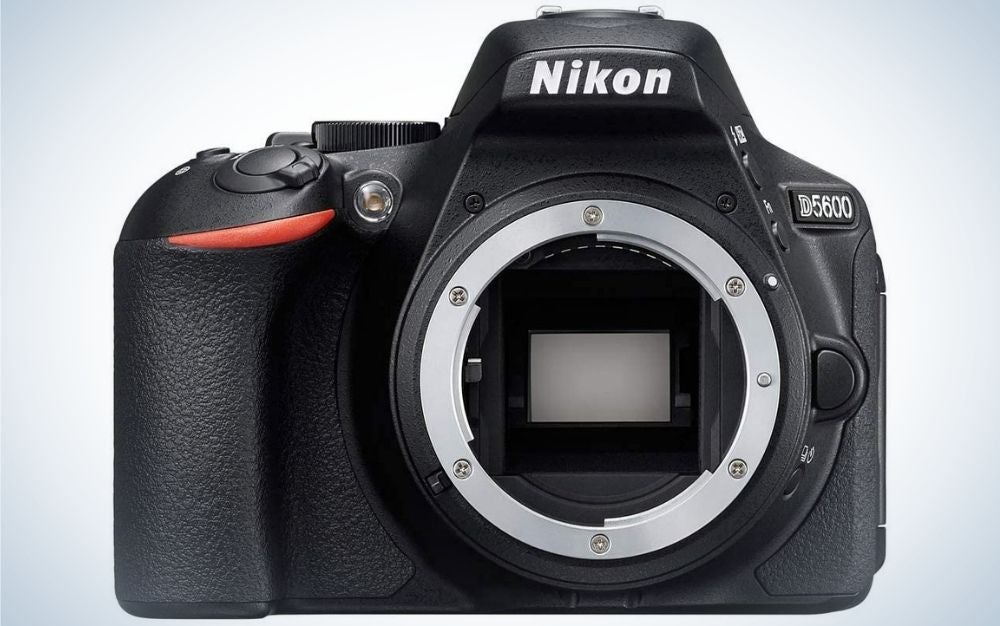
What we dislike: Video recording features are a bit below average.

Photo quality is a big step up from point-and-shoot cameras. What we like: Automatic control features work nicely for beginners. Best bang for the buck: Nikon D3300 with 18-55mm Lens Our take: Extremely low price for a camera that ships with a versatile starter lens, making it ideal as an entry-level DSLR. What we dislike: Wireless control features could be better.
#The newest nikon dslr camera manual#
What we like: Easier to use than the majority of DSLRs, yet it also has all of the advanced manual control features you'd expect to find. Nikon DSLR cameras we recommend Best of the best: Nikon D5500 with 18-55mm Lens Our take: Those seeking a first DSLR camera will love the image quality and fast performance level found here, all at a strong value. The recording technology behind a film camera and a digital camera is quite different, though. Both can make use of interchangeable lenses. Both use viewfinders to help you frame the scene. Nikon film and digital SLR cameras have a similar body type. Do Nikon digital cameras have similarities to Nikon film cameras of the past? A. You'll need to purchase a memory card, too. Photographers may want to add some additional lenses in the future. Over time, you probably will spend some money adding to your collection of gear. Do Nikon DSLR cameras have add-on costs? A. You also can use the wireless connectivity feature to remotely control the Nikon camera through a smartphone app. This allows you to share your photos with social media sites immediately after recording them.

#The newest nikon dslr camera Bluetooth#
Wireless capabilities: Nikon DSLRs often are built with WiFi and Bluetooth connectivity. However, some Nikon DSLR LCDs are affixed to the camera body and cannot swivel or rotate. This simplifies taking odd-angle shots or selfies. LCD screen: Some photographers prefer an LCD screen that swivels away from the camera body. When shooting in bright sunlight, the viewfinder works nicely versus seeing glare on the LCD screen. You can use the viewfinder or the display screen to frame the scene. Viewfinder: Nearly all Nikon DSLRs have a viewfinder. Otherwise, you can purchase an external flash unit, which provides better quality light. Flash: Entry-level Nikon DSLR cameras may have a built-in flash, which simplifies using the camera. Otherwise, you can purchase compatible lenses separately. This is a basic lens that allows you to begin using the camera immediately. Kit lens: Some Nikon DSLRs are sold as the camera body only. As you're shopping for a Nikon DSLR camera that will meet your needs, pay attention to these features. Nikon FX cameras typically cost $750 to $3,000, although you will find a few high-level models with a much higher price tag. Nikon DX DSLR cameras cost between $300 and $1,000. Features Nikon DSLR cameras cost anywhere from a few hundred dollars to several thousand dollars. However, non-professional photographers will be able to use a DX sensor camera successfully. (Nikon doesn't make lenses it calls FX lenses.) FX image sensors outperform DX image sensors. A non-DX lens is best paired with a Nikon FX DSLR camera.

The FX sensor measures 36 x 24 mm, making it a full-frame image sensor. Non-DX lenses will work with the Nikon DX DSLR camera, but the scenes will be slightly cropped.įX format: With an FX image sensor, you'll receive better image quality in your Nikon DSLR than with a DX sensor. With a DX image sensor camera, you'll want to pair it with a DX-format lens for the best quality. (The image sensor is a silicon chip that measures light in the scene, recording the photo.) DX format: The DX image sensor inside a Nikon DSLR camera is the smaller of the two formats at 24 x 16 mm. The image sensor inside the camera determines the category where each DSLR fits. Considerations when choosing Nikon DSLR cameras Nikon DSLR cameras are offered in two designs. For the best mix of performance and value, we have determined the Nikon D5500 DSLR with a kit lens to be the top option. These models range from entry-level to professional-level cameras, and all deliver excellent image quality. Nikon successfully made the transition from film to digital cameras a few decades ago, and the DSLR design marks the most powerful digital camera in the Nikon lineup. If you want to stick with a strong brand name among DSLRs, Nikon has been making high-quality cameras for several decades. Those looking to take the next step in honing their photography skills will eventually want a DSLR (digital single lens reflex) camera.


 0 kommentar(er)
0 kommentar(er)
